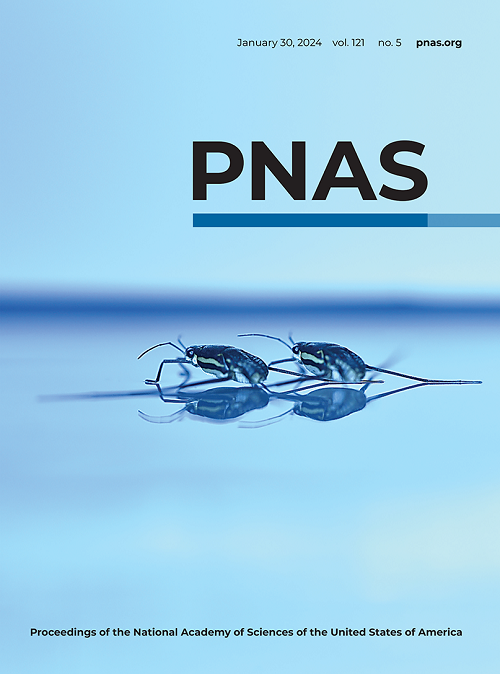Bacterial species with different nanocolony morphologies have distinct flow-dependent colonization behaviors
IF 9.4
1区 综合性期刊
Q1 MULTIDISCIPLINARY SCIENCES
Proceedings of the National Academy of Sciences of the United States of America
Pub Date : 2025-02-10
DOI:10.1073/pnas.2419899122
引用次数: 0
Abstract
Fluid flows are dominant features of many bacterial environments, and flow can often impact bacterial behaviors in unexpected ways. For example, the most common type of cardiovascular infection is heart valve colonization by gram-positive bacteria like求助全文
约1分钟内获得全文
求助全文
来源期刊
CiteScore
19.00
自引率
0.90%
发文量
3575
审稿时长
2.5 months
期刊介绍:
The Proceedings of the National Academy of Sciences (PNAS), a peer-reviewed journal of the National Academy of Sciences (NAS), serves as an authoritative source for high-impact, original research across the biological, physical, and social sciences. With a global scope, the journal welcomes submissions from researchers worldwide, making it an inclusive platform for advancing scientific knowledge.

 求助内容:
求助内容: 应助结果提醒方式:
应助结果提醒方式:


